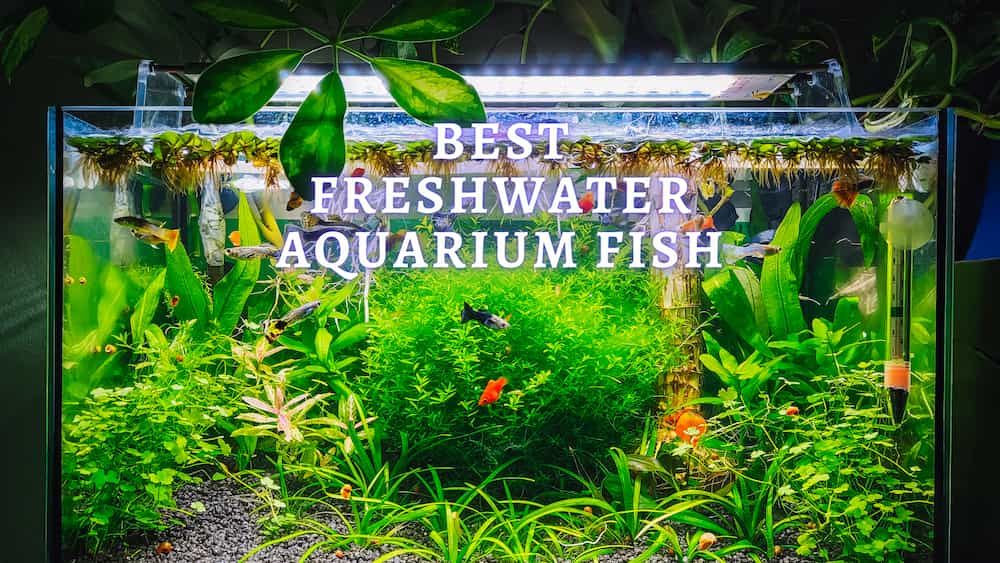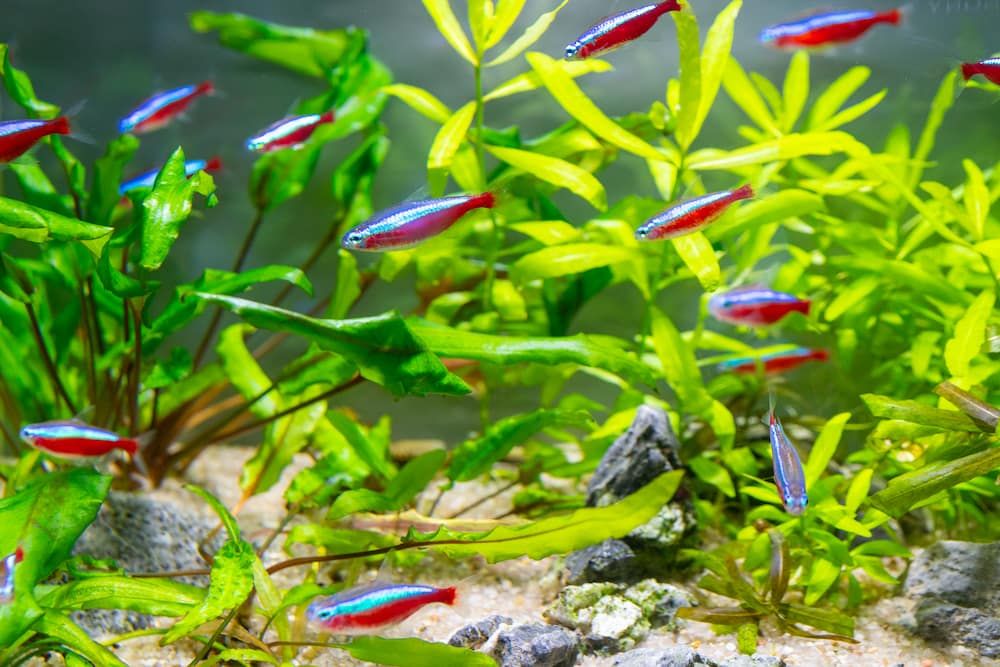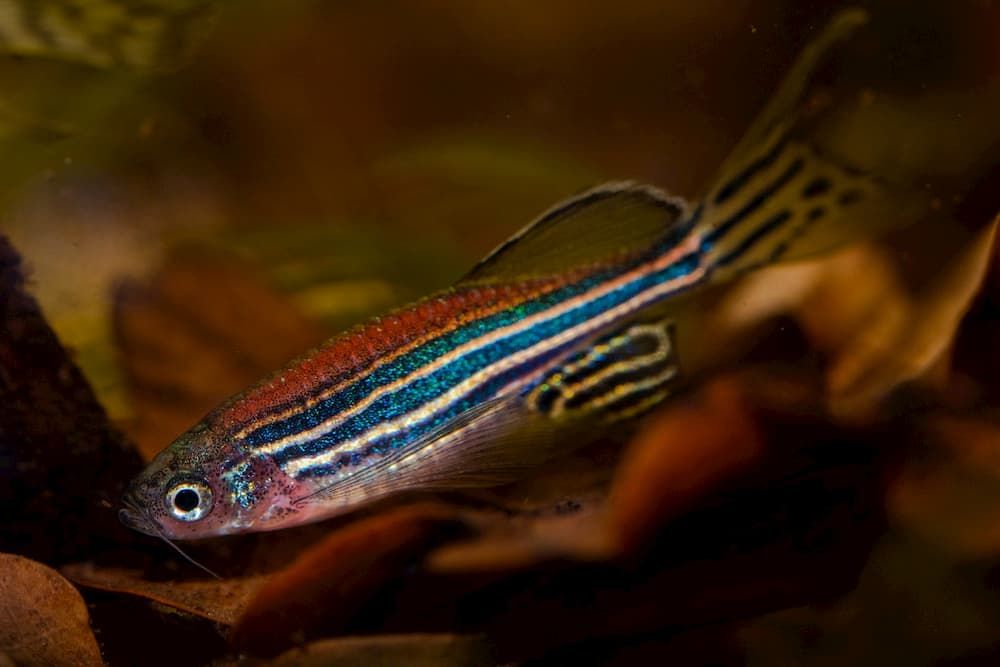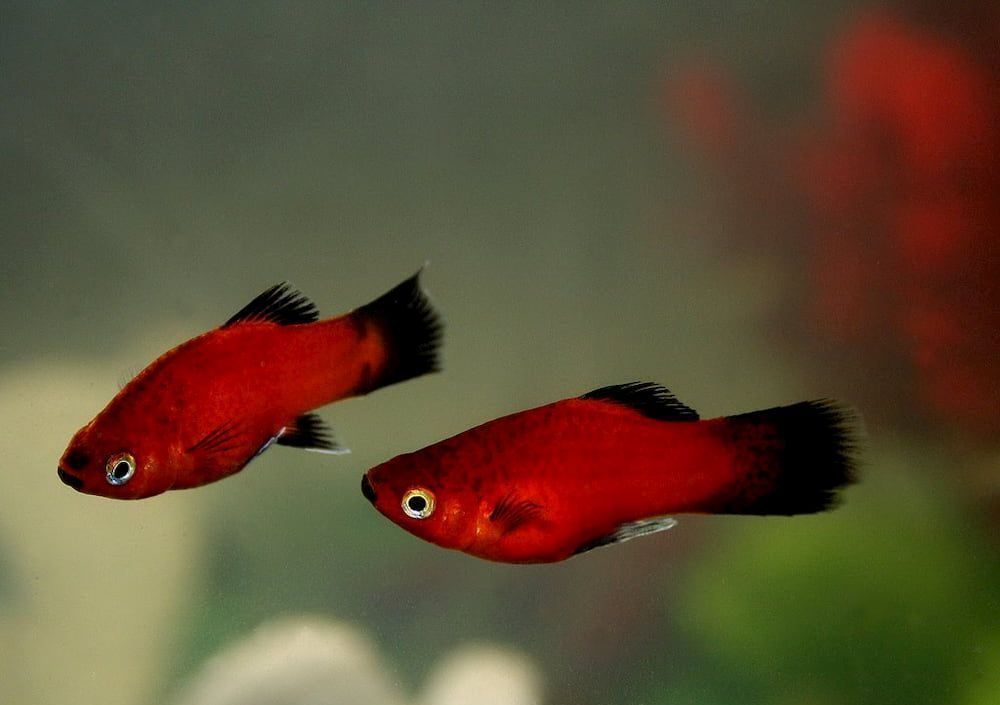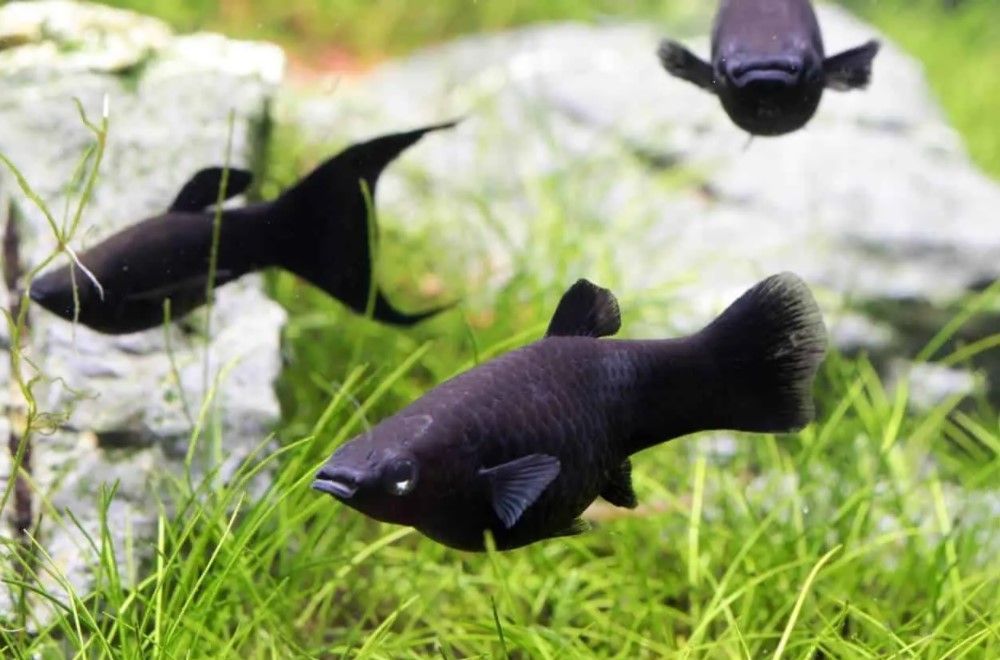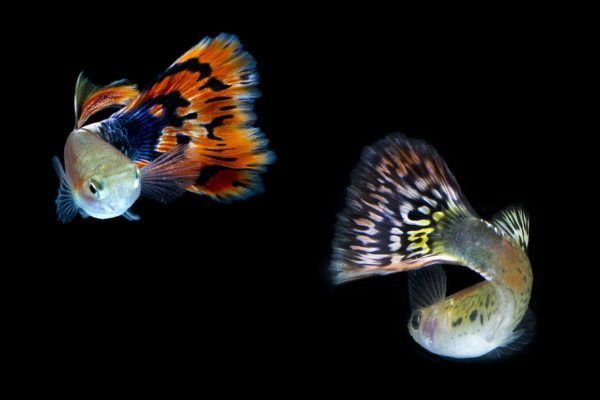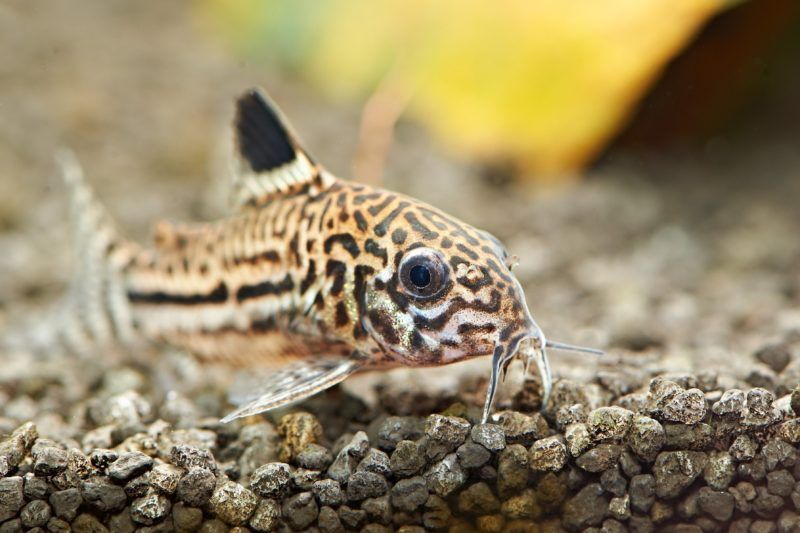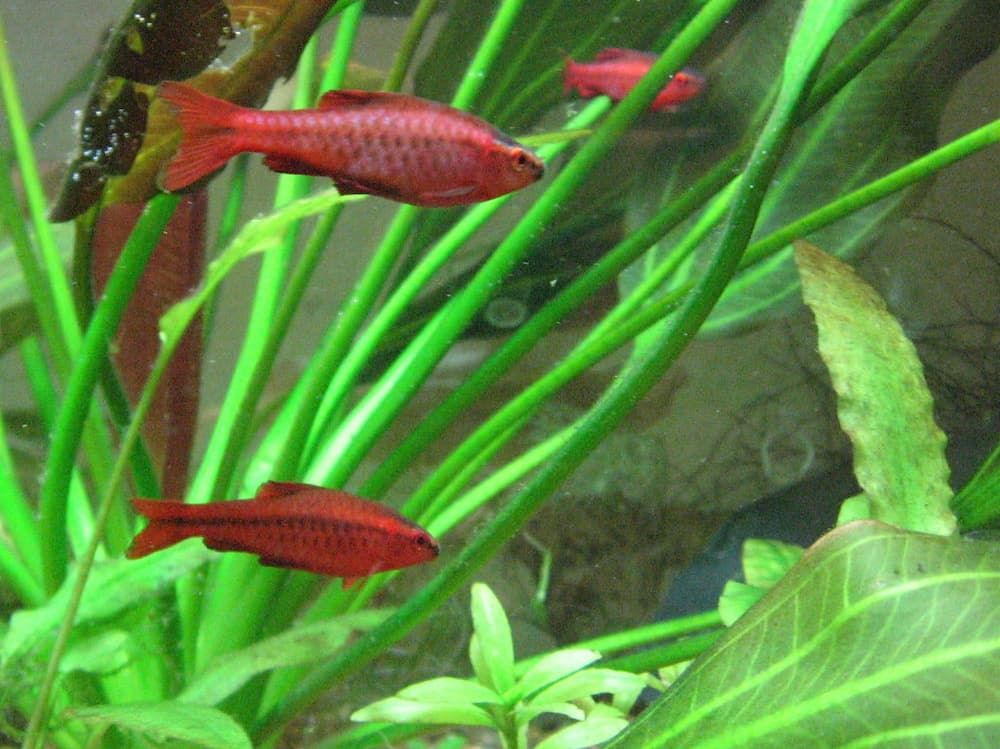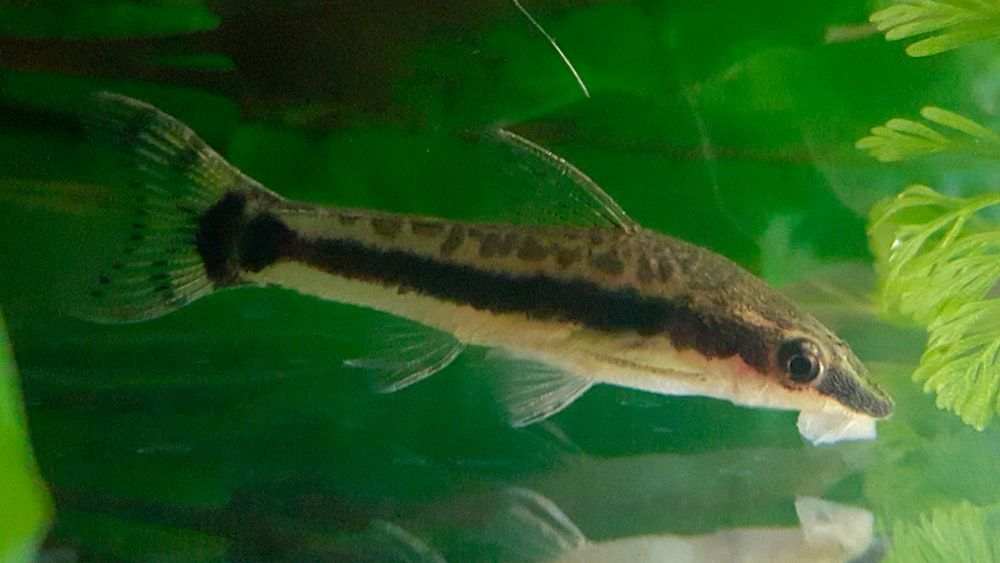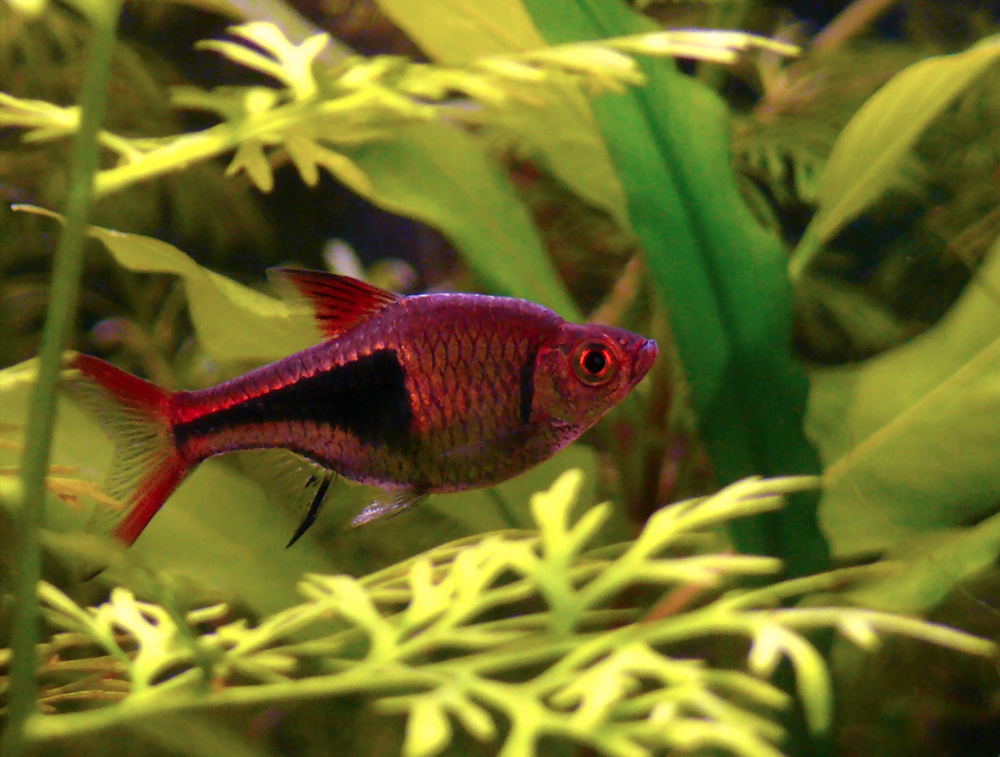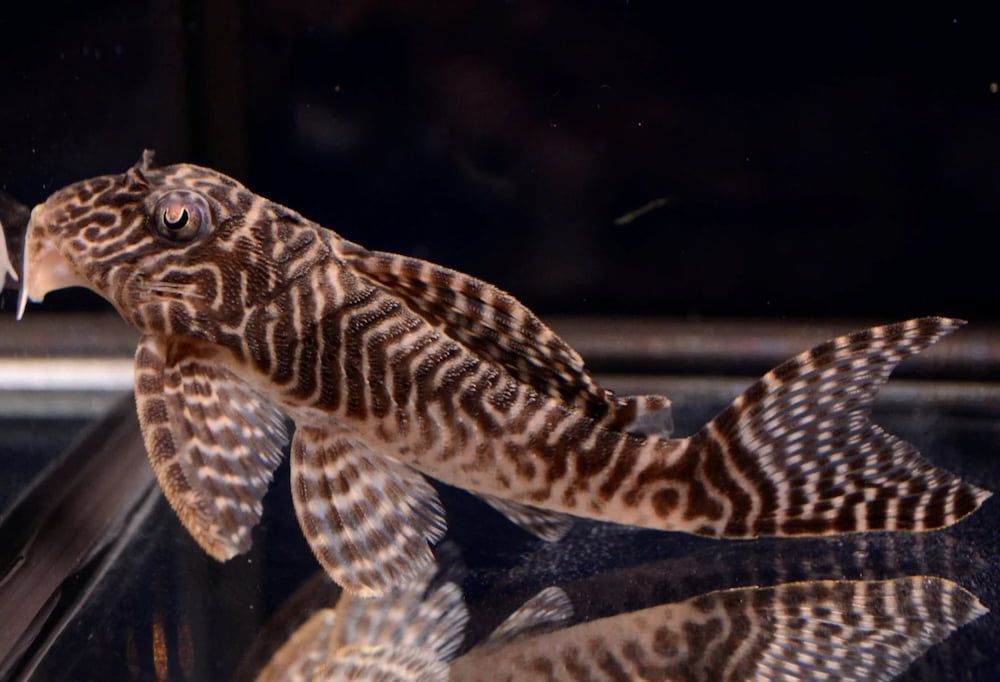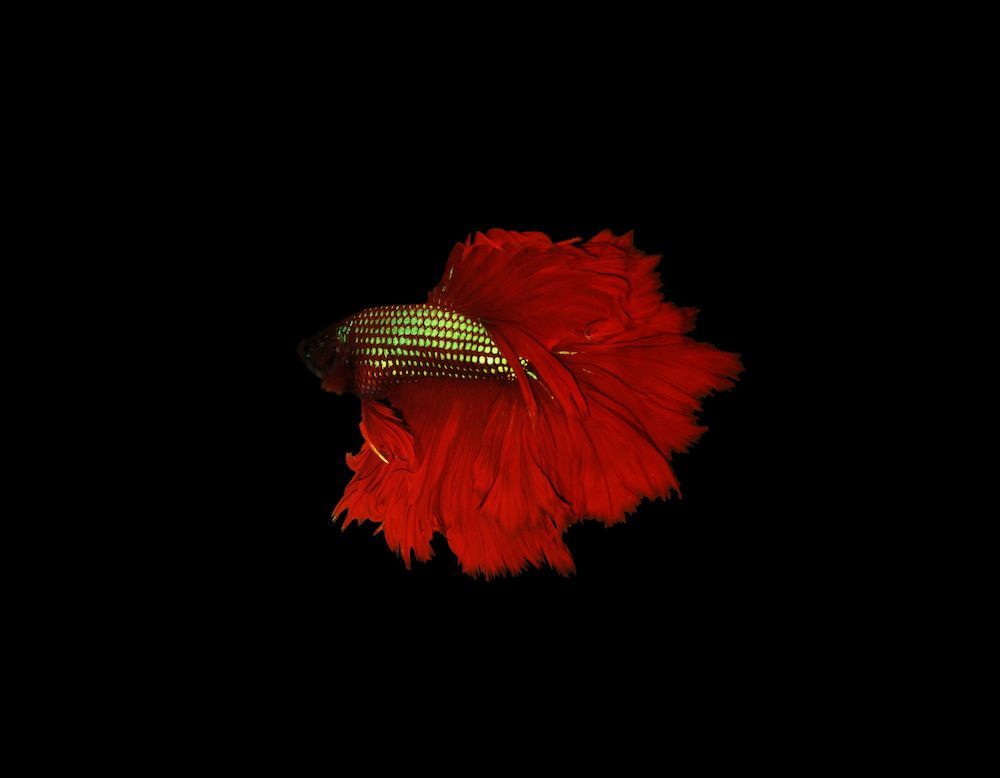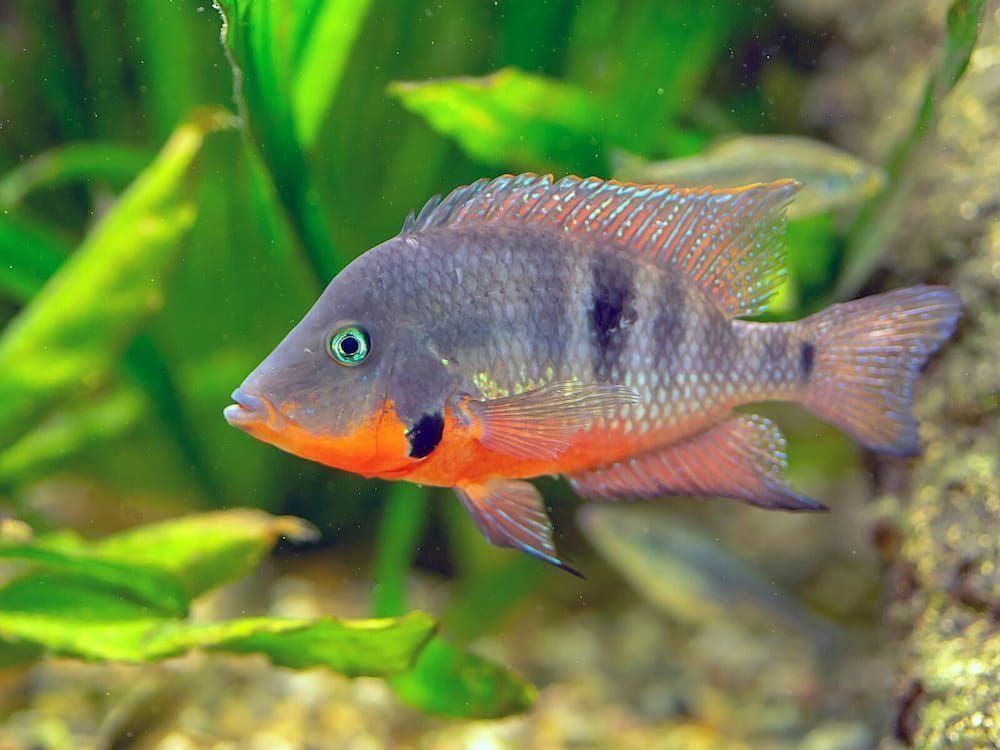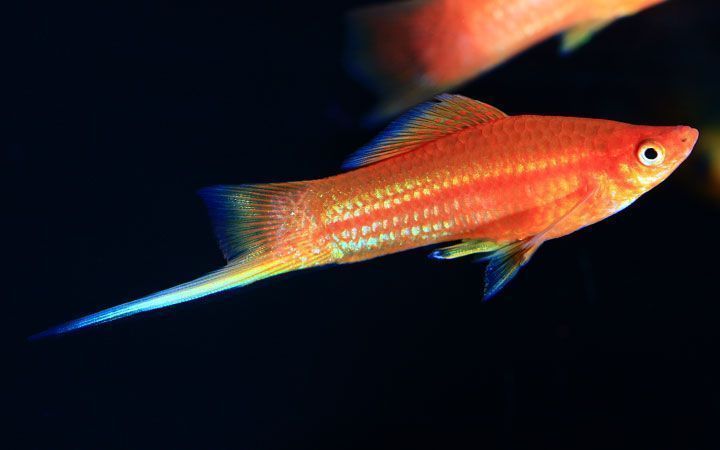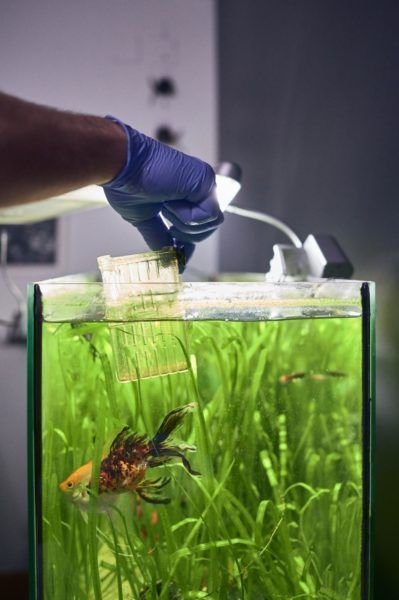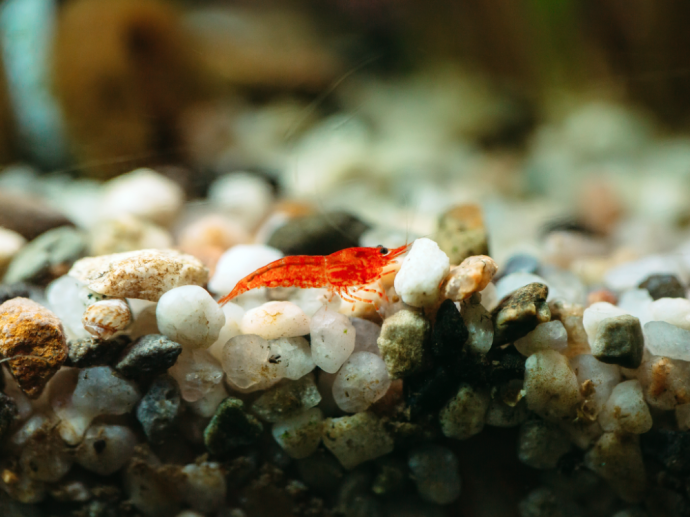The Best Freshwater Aquarium Fish: TOP-15 Freshwater Fish for Fish Tanks
Written by:
Author: Scott Jeffrey
Scott is a professional blogger with 12+ years of experience in writing, and holds an MA in anthropology. He has two cats as housemates. Also, Scott is passionate to research on pet-related topics such as dog training, puppy feeding, and cat health.
View all 63 articlesLearn about our editorial process and veterinary review board.
Viewed: 232
Updated on: 03/14/2023
Are you ready to dive into the world of freshwater aquariums? Starting an aquarium can be a fun and rewarding experience, but there are many things to consider before starting. In this blog, we will cover the easiest fish to keep alive in a freshwater tank, some of the most beautiful species that thrive in this environment, and how to properly combine different types of fish for a successful freshwater aquarium.
When choosing fish for your freshwater aquarium, it’s essential to consider the size of your tank, the water conditions, and the compatibility of different species. In this blog post, we’ll further detail which species will thrive in these environments and how to choose fish species combinations best to create a healthy and aesthetically pleasing, colorful freshwater aquarium fish.
Starting a freshwater aquarium can be intimidating, but with the right approach and knowledge, you’ll be ready to create an incredible underwater ecosystem. We will break down the basics of setting up a freshwater aquarium for the first time. With this information in mind, you’ll be on your way to starting a beautiful aquarium that will thrive for years to come!
Things to know before starting any freshwater aquarium
When setting up a freshwater aquarium, it is essential to be mindful of the size of your fish and the space they need. A commonly used rule is one inch of adult-size fish per gallon of water, while territorial fish may need more. Remember that internal dimensions, gravel, plants, and ornaments can reduce the volume of water in a tank, so bear this in mind when making calculations. Although we may consider an aquarium over 100 gallons large, it pales in comparison to the vastness of nature!
The tank’s shape and size should be considered when selecting fish for your aquarium. If you want to keep active species such as Danio or Barb, a wide tank will give them plenty of room to swim around and promote better harmony. For less active species like Discus, Angelfish, and Gourami, a tall and narrow tank is more suited as it takes up less space while providing enough swimming area. Ultimately, the right aquarium depends on the freshwater aquarium fish species you want to keep!
Schooling fish such as Tiger Barbs, Tetras, and Danios are known to be boisterous, so it is best to buy them in more significant numbers. Keeping six or more of them together helps reduce aggressive behavior, as the dominant fish cannot single out an individual. This also stops any weaker individuals from being bullied when schooling together.
Fish can communicate using a variety of signals, and it is essential to do your research before stocking an aquarium with any species. Territorial fish such as Cichlids, Knife Fish, and Loaches should be kept as individual specimens with tank mates that don’t look similar or are closely related. A large aquarium with plenty of cover and decorations can help; however, seeking advice from an aquarium expert will make sure you have species that get along together.
The gender of fish can also affect a community aquarium, with males being more likely to be territorial and aggressive. It is advisable that only one male, at most, of a similar or closely related species is kept within a community. Those with live-bearing fish should also keep the male/female ratio at 2-3 females per male to reduce the males’ mating behavior. Territorial and dominant hierarchies are standard among Cichlids, and if the aggressive fish cannot be removed in such cases, then the next fish in line may take its place. Predatory fish come in various shapes and sizes, such as Catfish, Arowanas, Leaf Fish, Bichirs, and Gar; they must be fed often as they hunt for whatever they can fit in their mouth.
Each one of them needs its own territory, which physical boundaries like rocks, caves, driftwood, and other decorations can determine. Tall, bushy plants are also suitable for providing extra habitat for schooling species. When introducing a new territorial fish to an existing community tank, adding décor items and rearranging existing ones can help deter aggression. During breeding, fish becomes incredibly defensive, so it is best practice to have a dedicated breeding tank for such cases. However, individual personalities in fish exist, and some may act unexpectedly – the best approach is to separate those that don’t get along.
Getting Your Tank Environment Ready for New Freshwater Fish:
Setting up a tank can seem daunting, but following our quick guide can prepare the environment for your new colorful freshwater fish additions. You should know key elements, including the nitrogen cycle, appropriate tank temperature, and necessary products. It’s essential to wait to add your fish; instead, wait for your tank to cycle over several weeks. Also note that the cloudiness in the tank in the first few weeks is normal, as part of the cycling process. Finally, ensure you maintain a consistent water temperature within two degrees or less; use a heater if necessary. With this information, you’ll be ready to welcome some new aquatic friends into your home!
Filling your tank with tap water is the next step in setting up your fish tank. Carefully and slowly add the gravel, and use a hose if possible. Additionally, rinse all ornaments and gravel with hot water (without any chemicals or soaps) to remove dust or paint residue. This will help keep your new aquarium clean and safe for its inhabitants.
With the tank filled, it’s time to turn on the filter and heater (if applicable). Do not turn these on beforehand, as this could damage electrical equipment. As for lights, keep them on for no longer than 8 hours a day, as prolonged exposure may lead to algae growth. To ensure a healthy environment, add in all necessary treatments as instructed by their respective bottles; water conditioner and biofilter are both essential.
To ensure a safe and healthy environment for your fish to live in, cycling the tank is essential. Let the tank cycle for at least a month before introducing any fish. Begin the process by adding a pinch of fish food in order to break it down into ammonia, which will help establish beneficial bacteria. This should prevent new tank syndrome caused by toxin buildup due to ammonia and nitrites. After all, products have been added, take a sample of 100ml of water in a clean container with a lid and visit your local pet store to check it. This can determine if the pH, GH, ammonia, and other levels are optimal. If all values are good, it’s time to add some fishy family members.
READ MORE: How to Set Up a Freshwater Aquarium?
What is the easiest freshwater fish to keep alive?
Neon tetras are some of the most colorful freshwater fish and the easiest freshwater ones to keep alive. They are inexpensive and some of the most resilient fish species in the world. As schooling fish, Neon tetras do best in schools of 6 or more and will happily inhabit both planted and non-planted tanks. They are a popular inclusion in many tanks, and they are often the best starter fish for someone who is just starting to try tending an aquarium for the first time.
Although small in size, these vibrant and undemanding freshwater fish are the perfect addition to any tank. Not only do they love living in groups, but their diet is straightforward and easy to keep up with. While they primarily eat flakes, providing them with occasional treats like blood worms or brine shrimp can make them even happier.
The Best Freshwater Aquarium Fish
Whether you’re looking for a showpiece tank or want to add variety to your underwater world, choosing the best fish for your aquarium is essential for success. Fortunately, many species can not only survive but thrive in captivity. To help you decide which ones are right for you and your tank’s setup, here is an overview of some of the best aquarium fish species available out there.
1. Neon Tetras
As mentioned previously, the Neon Tetra is a great schooling fish to get started within a freshwater tank. They are some of the most resilient tropical fish to keep, they look elegant, and they are best tended to in a school. They don’t require much for feeding or extra care, and they can add beautiful colors to any tank.
RELATED: Neon Tetra Breeding
2. Danios
Danios are ideal for beginners, being hardy fish, and adaptable that thrive in many water conditions. They’re active and easy to feed with store-bought flakes, and the Zebra Danio and Giant Danio make great additions to any aquarium.
They don’t require super strict temperature or pH levels and can even do well even if you have to leave for extended periods. For these reasons, they make great starter fish for those just getting into the hobby.
READ MORE: Tropical Community Fish Tank Guide
3. Platies
Platies are an excellent choice for the community tank, as they are peaceful and non-aggressive. Thanks to selective breeding, they come in a wide range of colors and have simple dietary requirements – they will eat most flake foods or frozen live foods.
Being peaceful fish, they are suitable for all community tanks and can live up to 5 years if cared for properly. Growing up to 3 inches, they come in a range of colorations and can be omnivores when it comes to diet. For the best results, vegetables should form the most significant part of their diet, with some additional meat components. To keep your Platies happy, make sure there are plenty of plants in the tank where they can hide and live as naturally as possible.
Their adaptability makes them ideal for beginners since they can thrive in various water conditions, and their mild temperament means that they get along well with their tank mates.
READ MORE: The Easiest Freshwater Fish to Breed: Guide For Beginners
4. Mollies
Mollies are an ideal choice for beginners and experienced fishkeepers alike. They are easy to care for and look great in freshwater tanks. As community fish, they do best with other peaceful tank mates or they may act aggressively toward them. An omnivore will enjoy a variety of food, including worms, algae, and chopped vegetables. On the small side of molly fish in size at 4.5 inches maximum length, multiple can be kept in one tank, ensuring they have an even stronger sense of being home while living up to 5 years with proper care.
5. Guppies
Guppies are an ideal choice for a first freshwater fish aquarium for aquarium beginner. They come in many different colors and are known for their hardiness – they can survive for up to a week without food, plus they eat regular flake foods as well as frozen or live shrimp, worms, and Daphnia. To prevent unwanted breeding, knowing the difference between males and females is essential.
READ MORE: How Many Different Types of Guppies Are There?
6. Cory Catfish
The Cory Catfish, or Corydoras, is a top choice for freshwater tank owners. Known for their appetite for algae, they can effectively clean a 20 to 30-gallon tank by themselves. They are peaceful community fish that prefer to remain active during the daytime but may also do so at night. While they need a minimum of 10 gallons tanks to thrive, larger aquariums are ideal too. Introducing some of these fish can help with cleaning your freshwater tank environment, and they will also add some beautiful variety to your ecosystem.
RELATED: Betta Fish Tank Mates
7. Khuli Loach
The Kuhli Loach is a small eel-like fish from Southeast Asia that can adapt to many different water conditions. They’re peaceful and make excellent tankmates for most non-aggressive fish, but should be kept with something manageable, which may mistake them for food. As bottom feeders, their diet consists of general pellets and live foods like worms and shrimp. They should be kept in groups of three or more to keep them happy.
8. Cherry Barbs
Cherry Barbs are an excellent choice for beginners looking to get into fishkeeping. They only grow up to 2 inches, tolerate changes in water parameters, and are easy to take care of. Plus, their bright colors make them eye-catching and enjoyable to watch when they become accustomed to their new environment. To make them feel secure in the tank, we recommend keeping some live plants so that they can hide if needed.
The Cherry Barb can be commonly confused with some goldfish varieties, but they can often live longer and tolerate changes to the water with greater adaptability.
9. Angel Fish
The Angelfish is a stunning choice for any freshwater and aquarium owner. It is native to rivers such as the Amazon and requires slow-moving water with plenty of driftwood and hiding places like small caves. These omnivores are comfortable eating worms, flakes, and vegetables, but be sure to choose tankmates that grow as large as the Angelfish, as they may otherwise become meals! This fish enjoys feasting on smaller fish and blood worms as part of its diet. Tetras and other small fish need to make better tank mates for this type of fish.
READ MORE: Types of Angelfish
10. Otocinclus Fish
The Otocinclus Fish is an herbivorous species known for its algae-eating capabilities. However, it should not be fed meat or other meat-based products. Algae wafers and green vegetables such eat plants such as lettuce, spinach, and zucchini are ideal food sources for the Otocinclus. It is a peaceful species that would fit well in a community tank with other delicate fish. They can be a welcome addition to your tank for keeping things clean and cutting down on the total amount of algae.
RELATED: What Freshwater Fish Eat Algae?
11. Rasbora Fish
The Rasbora is quite similar to the Tetra. The Harlequin Rasbora, in particular, is very peaceful fish and likes to interact with its tankmates daily. This species can live up to 8 years with the right water conditions and diet. Smaller fish in the same tank should be, at most double the size of the Rasbora. Otherwise, they may become meals!
12. Tiger Pleco
Tiger Plecos, originating from South America, are peaceful freshwater fish but can be very territorial. Please provide them with sinking food such as pellets and brine shrimp, but ensure they don’t eat your plants by keeping them satiated. Fill the bottom of your tank with rocks and ornaments for multiple tigers to have their own territory. Growing up to 5 inches in length and living up to 8 years, these fish can be great for beginners and they will clean the tank well.
13. Betta Fish
Bettas, also known as Siamese fighting fish, are renowned for their bright colors and elaborate tail fins. These popular freshwater tropical fish originate from Thailand and are popular additions to home aquariums. Bettas can live up to five years in captivity with the proper care, although they prefer tanks that don’t house other aggressive species.
Although, it can be challenging to care for due to its aggression towards other fish. If you want to add additional species to the tank, good options include Black Tetras, Catfish, Croaking Gouramis, Rasboras, and Poecilias.
READ MORE: Betta Fish Care Guide
14. Fire Mouth Cichlid
The Fire Mouth Cichlid is aptly named for its distinctive red coloring during the breeding season. They are popular options among new fishkeepers due to their friendly demeanor and low cost. However, they can become territorial when breeding and should be kept alone if possible. Rocks and tall plants may provide some protection in a community tank setting. These cichlids will reach up to 6 inches in length as adults and usually subsist on regular flake food. Cichlid varieties can be easily found at most pet stores.
15. Swordtails
Swordtails are an increasingly popular among devoted fans. They prefer a plant-based diet and readily accept vegetable-based flakes. Growing up to 12 cm in length, with low demands for water conditions, they make excellent beginner fish. Five or more should be kept together for optimal results. The optimal water temperature is between 25 to 28°C, and a fast-flowing current is best for recreating the wild environment. The swordtail is often considered a fish for beginners only, but it can be a beautiful addition to the tank for its colors.
READ MORE: Best Freshwater Aquarium Fish Combination
People also ask
What is the most resilient freshwater aquarium fish?
The neon tetra and Zebra danios, Danio rerio, are one of the hardiest species of tropical fish around and make excellent for beginner fish keepers. They are highly adaptable as they can survive in a wide range of water types – from hard to soft, warm to unheated, and still to flow. Perfect for new aquariums and fishkeepers alike, these fish are sure to bring plenty of enjoyment!
What is the coolest fish to own?
The Kuhli Loach is definitely the most extraordinary and unique fish that any beginner could try in their tank. Their eel-like appearance, long slender bodies, and playful behavior make them truly unique. Not to mention their love of hiding spots like caves or driftwood, which adds a special touch to any aquarium; with these fish, you can be sure your tank will definitely stand out from the rest!
What is the prettiest fish for a tank?
In terms of popular freshwater fish,, the favorites for many are the Angel Fish and Betta fish. Angelfish and Betta fish are undoubtedly two of the most beautiful freshwater fish that you can keep in a tank. Their vibrant colors, distinct shapes, and fascinating behaviors make them stand out in any aquarium. From the majestic angel fish to the playful Betta, these two species offer an array of dazzling displays that will captivate any observer.
Should I always trust the advice of pet or aquarium store staff?
Though the staff at fish stores often have good intentions, their knowledge can be lacking. To avoid making mistakes, do your own research for the fish you are interested in—water parameters, tank mates, size, etc. This information can be found easily and quickly online, so save yourself the hassle of getting the wrong advice. Depending on the aquarium community near where you live, it may be better to reach out online and get a bit more guidance. It’s not worth risking the tank that you have worked hard to create or your fish.
Final Thoughts
Hopefully, this article has armed you with a good base knowledge of setting up a freshwater tank, choosing the best species, and creating a custom look that is going to be a beautiful ecosystem for you to enjoy. With a proper balance and the right fish, you can create a beautiful aquarium that will be easy to sustain. Do some experimenting, and be sure to ask an expert before you add new species to your tank, but have fun with the process!
 Freshwater Fish 15 Best Fish for Outdoor Ponds: Best and Easiest to Take Care Of
Freshwater Fish 15 Best Fish for Outdoor Ponds: Best and Easiest to Take Care Of - 108
- 0
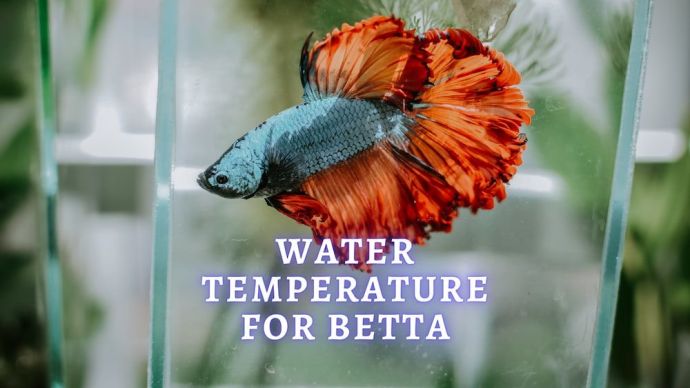 Freshwater Fish Betta Fish Temperatures: Guide To The Perfect Betta Fish Water Temperature
Freshwater Fish Betta Fish Temperatures: Guide To The Perfect Betta Fish Water Temperature - 252
- 0









